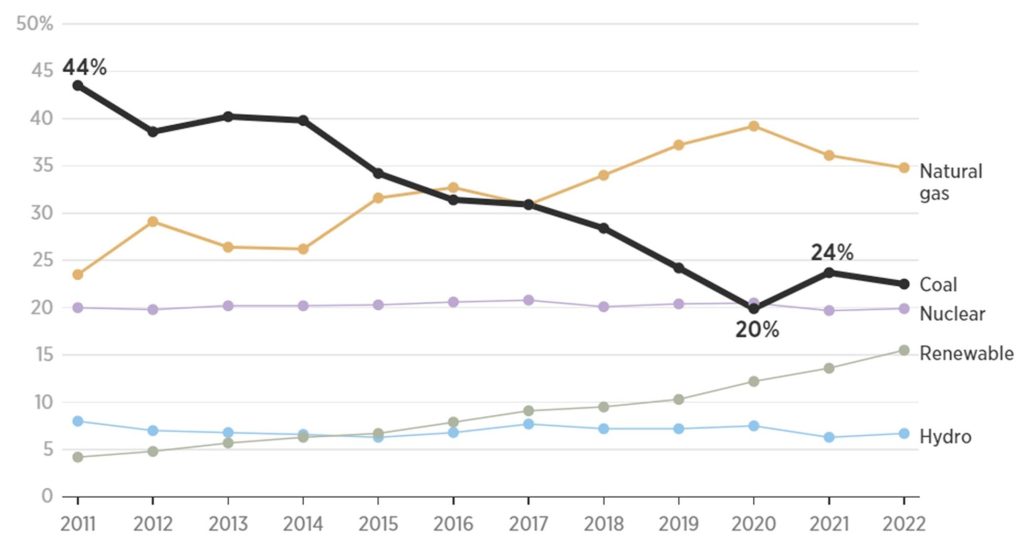
The seeming pariah of energy generation, coal, is making a comeback. And it’s quite ironic that climate change is a big reason why. For years, coal-generated electricity has been on the decline as regulators seek to limit its emissions. However, severe weather events – linked to the effects of climate change – are forcing greater coal production and coal-firing to sustain the continuity of electric grids across the U.S. and the world. Continuity has been a chief concern as economies rebound from the COVID-19 pandemic, and coal is helping fuel it.
Coal’s share of fuel sources used to generate electricity rose from 20% in 2020 to an estimated 24% this year, but otherwise has been in a steady decline over the last 10 years. Coal’s use for electricity is expected to decline slightly next year.

In early 2021, Texas experienced major power outages in the wake of three severe winter storms. These storms crippled state natural gas surplus delivery and iced out a large portion of its wind-powered generation.
PJM, the regional transmission organization for eastern, mid-Atlantic states has imposed new rules on power plants to ensure that they do not run short on fuel in the face of the upcoming winter months. This is an attempt to prevent a grid failure like that in Texas.
PJM’s Senior Vice President of Operations Michael Bryson has said, “Our top priority at PJM is ensuring a reliable electric grid. We are especially concerned about coal supply chain issues and inventory levels heading into the winter, so we are taking action designed to give PJM and generator owners more flexibility and additional tools to manage their inventories, so they can be available when they are needed for reliability.”
Persistent drought in the U.S. west has curtailed hydropower generation, and the demand on generation from natural gas and coal has risen to meet that shortfall.
Adding to the weather events and rising cost of natural gas, the demand for electricity is outpacing renewable generation.
As a result of these factors, coal is being relied upon to pick up the slack.
According to Michelle Bloodworth, chief executive of America’s Power, a trade group for the coal industry, “the coal fleet must be an integral part of the all-the-above energy strategy for the foreseeable future because the coal fleet supports grid reliability and resilience, helps keep electricity prices affordable, provides fuel security, and serves as an insurance policy when other electricity sources are not available or are too expensive.”
Despite the recent effects of weather events, the pandemic, and rising natural gas prices, the current uptick in coal demand is not expected to be sustained. Although rising natural gas prices have resulted in more U.S. coal-fired generation than last year, this increase in coal generation will most likely not continue. The electric power sector has retired about 30% of its generating capacity at coal plants since 2010, and no new coal-fired capacity has come online in the United States since 2013. In addition, coal stocks at U.S. power plants are relatively low, and production at operating coal mines has not been increasing as rapidly as the recent increase in coal demand. For 2022, the U.S. Energy Information Administration forecasts that U.S. coal-fired generation will decline about 5% in response to continuing retirements of generating capacity at coal power plants and slightly lower natural gas prices.